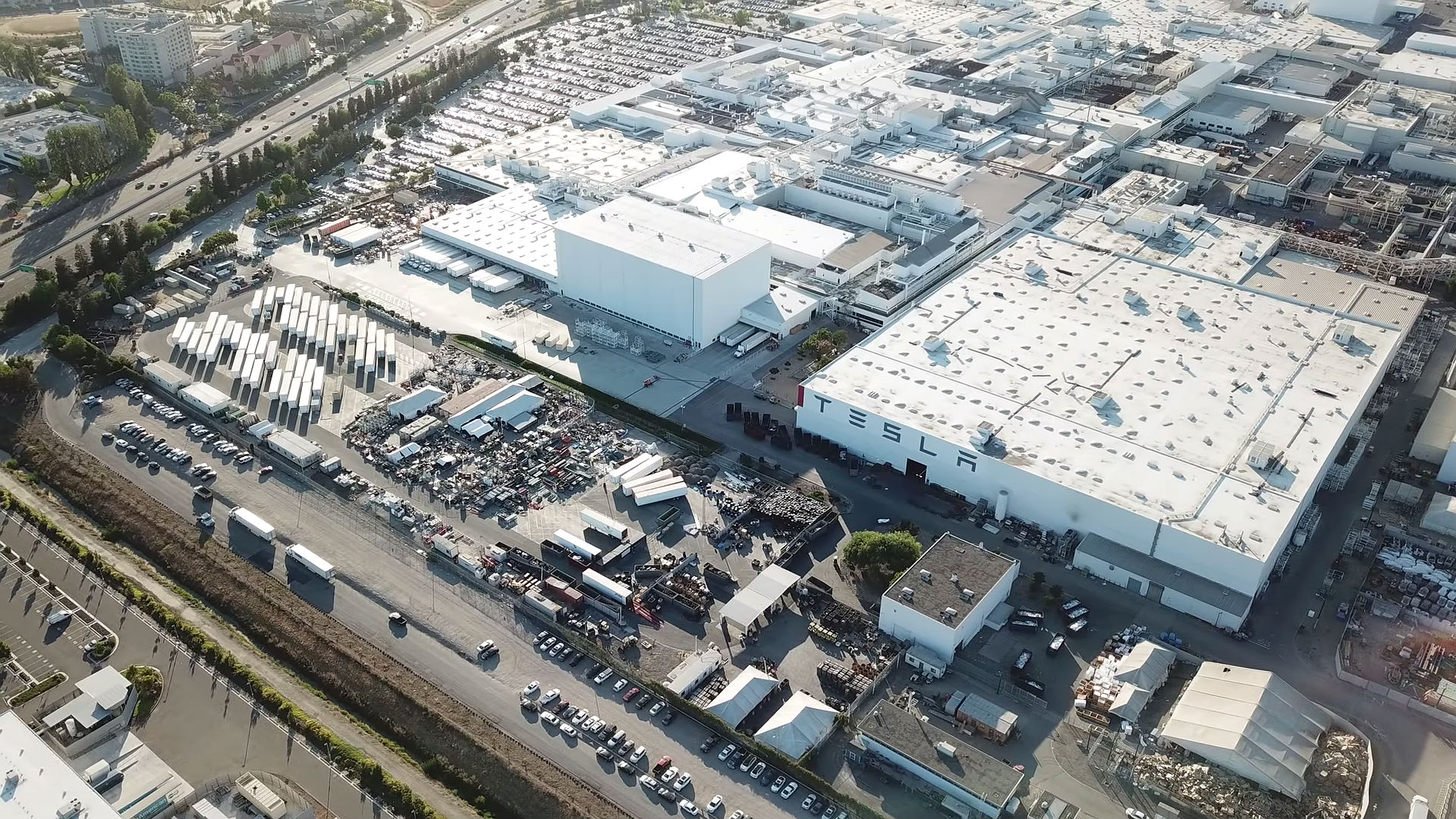

Investor's Corner
Tesla’s last-month Model 3 production blitz for Q3 will likely be its most impressive yet
This Q3 2018 would likely be one for Tesla’s history books, since this could be the time when the company hits a breakthrough point in its journey towards becoming a mainstream carmaker. Amidst the noise last Friday resulting from the departure of two executives and Elon Musk’s actions during a podcast, the company released an update stating that it would likely deliver twice as many cars this third quarter as it did in Q2 2018.
Tesla’s optimistic and bold forecast for the third quarter, which was authored by Elon Musk, was published on the company’s official blog. The post was a letter sent to Tesla employees, and it noted that the company is “about to have the most amazing quarter in (its) history, building and delivering more than twice as many cars as (it) did last quarter.”
Tesla delivered a total of 40,740 vehicles in Q2 2018, of which 18,440 were Model 3, 10,930 were Model S, and 11,370 were Model X. The company was able to manufacture a total of 53,339 vehicles during Q2 as well, comprised of 28,578 Model 3 and 24,761 Model S and X. Considering Musk’s recent letter to Tesla’s employees, it appears that Tesla is attempting to deliver more than 80,000 Model 3, Model S, and Model X this Q3.
It took a lot of pain and effort to get to this point. Tesla’s trials and Elon Musk’s tribulations since the company started manufacturing the Model 3 are well-documented. Since July 2017, Tesla faced bottleneck after bottleneck in its Fremont factory and at Gigafactory 1 in Nevada. The progress of Tesla’s Model 3 push was nothing short of “production hell,” and CEO Elon Musk was not exaggerating when he described the past year as one of the “most painful” 12 months of his career.
The second quarter appears to have been a pivotal point in Tesla’s Model 3 push, as it was the quarter when it was finally able to hit its manufacturing targets for the first time. Tesla was able to produce 5,000 Model 3 during the final week of June, on top of 2,000 Model S and X. This 7,000-vehicle week was considered a milestone by the company, though it was considered unremarkable by Ford Europe CEO Steven Armstrong, who stated that the legacy automaker could produce 7,000 vehicles in 4 hours. Tesla’s critics were also dismissive of the production milestone, stating that the company would probably not be able to maintain its optimum production rate for the Model 3 during the following months of Q3.

Tesla appears to have taken these criticisms as a personal challenge to prove its critics wrong. During the company’s Q2 2018 earnings call, Elon Musk noted that Tesla was able to produce 5,000 Model 3 per week during “multiple weeks” in July. In August, Tesla showed even more signs that the Model 3’s production was still going full throttle. The Model 3’s VIN filings rocketed past the 100,000-mark, and Bloomberg‘s production tracker, which has only gotten more accurate during the past months, estimated that at one point in August, Tesla produced more than 6,000 Model 3 in a week. Evercore ISI analysts who visited the Fremont factory also concluded that Tesla could ramp to 7,000-8,000 Model 3 per week with minimal CapEx.
September is the final month of the third quarter, and Tesla is already showing indications that its Model 3 push would only get more aggressive. Reports have emerged that Model 3 VINs in the 100k range are already being assigned to reservation holders. A Tesla employee who works at Fremont’s paint shop has also teased on Twitter (in a post that has since been deleted) that production is going well, and that the company is “smashing records.”
During the past two quarters, Tesla has shown a tendency to adopt radical and unorthodox strategies to push its manufacturing capabilities during the final month of a quarter. In Q1, the last week of March saw Tesla going all-in to produce more than 2,000 Model 3 in a week. In Q2, June saw the company setting up GA4 inside a sprung structure as a means to hit its production target of building 5,000 Model 3 in one week. It remains to be seen if Tesla would adopt something similarly unique for Q3, but one thing seems certain — the company is about to go on a production blitz at a scale unmatched in the company’s history.

Investor's Corner
Tesla stock closes at all-time high on heels of Robotaxi progress

Tesla stock (NASDAQ: TSLA) closed at an all-time high on Tuesday, jumping over 3 percent during the day and finishing at $489.88.
The price beats the previous record close, which was $479.86.
Shares have had a crazy year, dipping more than 40 percent from the start of the year. The stock then started to recover once again around late April, when its price started to climb back up from the low $200 level.
This week, Tesla started to climb toward its highest levels ever, as it was revealed on Sunday that the company was testing driverless Robotaxis in Austin. The spike in value pushed the company’s valuation to $1.63 trillion.
Tesla Robotaxi goes driverless as Musk confirms Safety Monitor removal testing
It is the seventh-most valuable company on the market currently, trailing Nvidia, Apple, Alphabet (Google), Microsoft, Amazon, and Meta.
Shares closed up $14.57 today, up over 3 percent.
The stock has gone through a lot this year, as previously mentioned. Shares tumbled in Q1 due to CEO Elon Musk’s involvement with the Department of Government Efficiency (DOGE), which pulled his attention away from his companies and left a major overhang on their valuations.
However, things started to rebound halfway through the year, and as the government started to phase out the $7,500 tax credit, demand spiked as consumers tried to take advantage of it.
Q3 deliveries were the highest in company history, and Tesla responded to the loss of the tax credit with the launch of the Model 3 and Model Y Standard.
Additionally, analysts have announced high expectations this week for the company on Wall Street as Robotaxi continues to be the focus. With autonomy within Tesla’s sights, things are moving in the direction of Robotaxi being a major catalyst for growth on the Street in the coming year.
Elon Musk
Tesla needs to come through on this one Robotaxi metric, analyst says
“We think the key focus from here will be how fast Tesla can scale driverless operations (including if Tesla’s approach to software/hardware allows it to scale significantly faster than competitors, as the company has argued), and on profitability.”

Tesla needs to come through on this one Robotaxi metric, Mark Delaney of Goldman Sachs says.
Tesla is in the process of rolling out its Robotaxi platform to areas outside of Austin and the California Bay Area. It has plans to launch in five additional cities, including Houston, Dallas, Miami, Las Vegas, and Phoenix.
However, the company’s expansion is not what the focus needs to be, according to Delaney. It’s the speed of deployment.
The analyst said:
“We think the key focus from here will be how fast Tesla can scale driverless operations (including if Tesla’s approach to software/hardware allows it to scale significantly faster than competitors, as the company has argued), and on profitability.”
Profitability will come as the Robotaxi fleet expands. Making that money will be dependent on when Tesla can initiate rides in more areas, giving more customers access to the program.
There are some additional things that the company needs to make happen ahead of the major Robotaxi expansion, one of those things is launching driverless rides in Austin, the first city in which it launched the program.
This week, Tesla started testing driverless Robotaxi rides in Austin, as two different Model Y units were spotted with no occupants, a huge step in the company’s plans for the ride-sharing platform.
Tesla Robotaxi goes driverless as Musk confirms Safety Monitor removal testing
CEO Elon Musk has been hoping to remove Safety Monitors from Robotaxis in Austin for several months, first mentioning the plan to have them out by the end of 2025 in September. He confirmed on Sunday that Tesla had officially removed vehicle occupants and started testing truly unsupervised rides.
Although Safety Monitors in Austin have been sitting in the passenger’s seat, they have still had the ability to override things in case of an emergency. After all, the ultimate goal was safety and avoiding any accidents or injuries.
Goldman Sachs reiterated its ‘Neutral’ rating and its $400 price target. Delaney said, “Tesla is making progress with its autonomous technology,” and recent developments make it evident that this is true.
Investor's Corner
Tesla gets bold Robotaxi prediction from Wall Street firm
Last week, Andrew Percoco took over Tesla analysis for Morgan Stanley from Adam Jonas, who covered the stock for years. Percoco seems to be less optimistic and bullish on Tesla shares, while still being fair and balanced in his analysis.

Tesla (NASDAQ: TSLA) received a bold Robotaxi prediction from Morgan Stanley, which anticipates a dramatic increase in the size of the company’s autonomous ride-hailing suite in the coming years.
Last week, Andrew Percoco took over Tesla analysis for Morgan Stanley from Adam Jonas, who covered the stock for years. Percoco seems to be less optimistic and bullish on Tesla shares, while still being fair and balanced in his analysis.
Percoco dug into the Robotaxi fleet and its expansion in the coming years in his latest note, released on Tuesday. The firm expects Tesla to increase the Robotaxi fleet size to 1,000 vehicles in 2026. However, that’s small-scale compared to what they expect from Tesla in a decade.
Tesla expands Robotaxi app access once again, this time on a global scale
By 2035, Morgan Stanley believes there will be one million Robotaxis on the road across multiple cities, a major jump and a considerable fleet size. We assume this means the fleet of vehicles Tesla will operate internally, and not including passenger-owned vehicles that could be added through software updates.
He also listed three specific catalysts that investors should pay attention to, as these will represent the company being on track to achieve its Robotaxi dreams:
- Opening Robotaxi to the public without a Safety Monitor. Timing is unclear, but it appears that Tesla is getting closer by the day.
- Improvement in safety metrics without the Safety Monitor. Tesla’s ability to improve its safety metrics as it scales miles driven without the Safety Monitor is imperative as it looks to scale in new states and cities in 2026.
- Cybercab start of production, targeted for April 2026. Tesla’s Cybercab is a purpose-built vehicle (no steering wheel or pedals, only two seats) that is expected to be produced through its state-of-the-art unboxed manufacturing process, offering further cost reductions and thus accelerating adoption over time.
Robotaxi stands to be one of Tesla’s most significant revenue contributors, especially as the company plans to continue expanding its ride-hailing service across the world in the coming years.
Its current deployment strategy is controlled and conservative to avoid any drastic and potentially program-ruining incidents.
So far, the program, which is active in Austin and the California Bay Area, has been widely successful.








